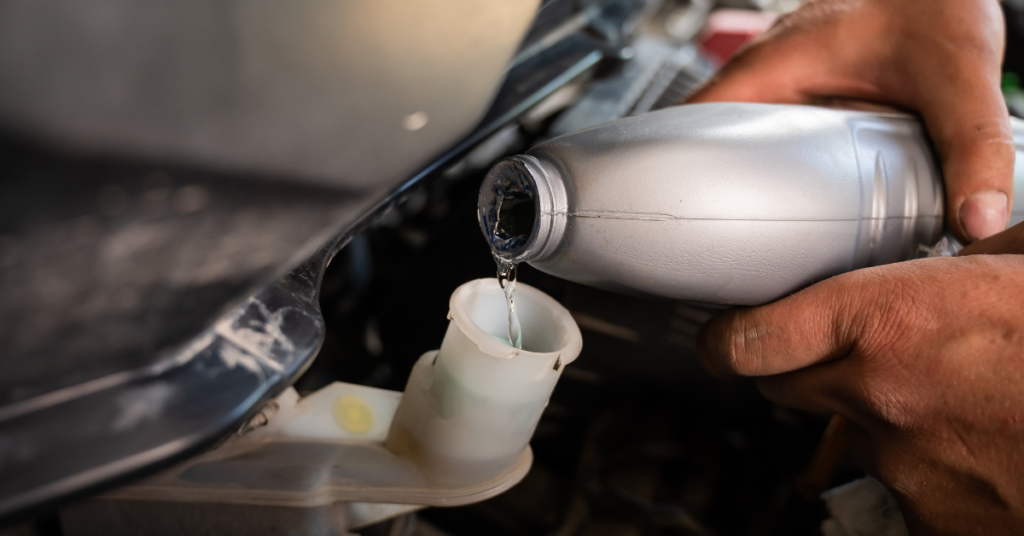
When it comes to maintaining your vehicle’s transmission, adding transmission fluid is a crucial task. However, many vehicle owners are often unsure about how long to wait after adding transmission fluid before resuming their regular activities.
In this article, we will delve into this important topic, providing you with valuable insights and guidelines to ensure the optimal performance and longevity of your vehicle’s transmission.
Contents
Importance of Transmission Fluid
The waiting time can vary depending on factors such as vehicle type, transmission type, and fluid type. For most automatic transmissions, it is generally recommended to wait for about 10-15 minutes.
Manual transmissions usually require a longer waiting time, typically 30-60 minutes.
Transmission fluid serves multiple essential functions, including:
Lubrication
Transmission fluid lubricates the various components of the transmission, reducing friction and preventing excessive wear and tear. It creates a protective barrier between the moving parts, allowing them to operate smoothly and efficiently.
Cooling
Transmission fluid helps in dissipating heat generated by the transmission, preventing overheating and potential damage to the system. It absorbs heat from the moving parts and carries it away, maintaining the optimal temperature for operation.
Cleaning
Transmission fluid helps to clean and remove any contaminants or debris that might accumulate within the transmission. It contains detergents and additives that break down sludge, varnish, and metal particles, preventing them from causing damage to the system.
Hydraulic power transmission
It creates hydraulic pressure that enables smooth gear shifting and overall transmission operation. The fluid provides the necessary force to engage and disengage gears, allowing for seamless gear changes and efficient power transfer.
By performing these vital functions, transmission fluid plays a crucial role in ensuring the smooth operation and longevity of your vehicle’s transmission system.
Factors to Consider
Several factors influence the waiting time after adding transmission fluid. It is crucial to take these factors into account to ensure the optimum performance of your transmission and prevent potential damage. Let’s discuss these factors in detail:
1. Vehicle Type
The waiting time after adding transmission fluid can vary depending on the type of vehicle you own. Different vehicle manufacturers may recommend different waiting periods.
Therefore, it is advisable to refer to your vehicle’s owner’s manual for specific instructions. Generally, the waiting time can range from a few minutes to a couple of hours.
- Some vehicles may have a built-in timer that automatically determines the waiting time after adding transmission fluid. In such cases, it is important to follow the instructions provided by the vehicle’s manufacturer.
- High-performance vehicles or vehicles with advanced transmission systems may require longer waiting times to ensure proper fluid circulation and settling.
- Older vehicles or vehicles with worn-out transmission components may also require longer waiting times to allow the fluid to reach all the necessary areas and provide adequate lubrication.
2. Transmission Type
The type of transmission in your vehicle also plays a role in determining the waiting time after adding fluid. There are two main types of transmissions: automatic and manual.
Automatic transmissions typically require less waiting time, while manual transmissions may need a longer period to allow the fluid to settle properly.
Automatic transmissions often have a pump that circulates the fluid continuously, allowing it to reach all the necessary areas quickly. Therefore, the waiting time after adding transmission fluid in an automatic transmission is usually shorter.
Manual transmissions, on the other hand, may require a longer waiting time as they have more complex gear systems. The fluid needs sufficient time to flow through all the gears and components, ensuring proper lubrication.
It is advisable to wait for at least 30-60 minutes before operating the vehicle with a manual transmission.
Some vehicles with advanced manual transmissions may have specific waiting time recommendations provided by the manufacturer. It is important to follow these instructions to avoid any potential damage to the transmission system.
3. Fluid Type

The type of transmission fluid you use can also influence the waiting time. Some transmission fluids are designed to be compatible with specific vehicles and require a shorter waiting time, while others may take longer to settle.
Always refer to the manufacturer’s recommendations and use the appropriate fluid for your vehicle.
- Synthetic transmission fluids, for example, are known for their superior performance and ability to withstand high temperatures. They may require a shorter waiting time after adding fluid compared to conventional fluids.
- It is important to use the transmission fluid recommended by the vehicle’s manufacturer to ensure compatibility and optimal performance. Using the wrong type of fluid can lead to transmission malfunctions and potential damage.
- If you are unsure about the appropriate fluid for your vehicle, consult your vehicle’s owner’s manual or seek advice from a professional mechanic.
General Guidelines
While waiting times may vary depending on the above factors, here are some general guidelines to keep in mind:
Automatic Transmission
For most automatic transmissions, it is generally recommended to wait for about 10-15 minutes after adding transmission fluid. This gives the fluid enough time to circulate throughout the system and settle properly.
After adding transmission fluid, start the engine and let it idle for a few minutes. This allows the fluid to reach all the necessary components and ensures proper lubrication.
While idling, shift the transmission through all the gears, including reverse and drive, to facilitate fluid circulation. This helps in distributing the fluid evenly and removes any air bubbles trapped within the system.
After the recommended waiting time, you can safely resume your regular activities with your vehicle.
Manual Transmission
Manual transmissions usually require a longer waiting time as they have more complex gear systems. It is advisable to wait for at least 30-60 minutes before operating the vehicle.
Similar to automatic transmissions, start the engine and let it idle for a few minutes after adding transmission fluid. This allows the fluid to reach all the gears and components.
Shift the transmission through all the gears multiple times to ensure proper fluid circulation and settling. This helps in removing any air pockets and ensures adequate lubrication.
After the recommended waiting time, you can engage the gears and drive your vehicle.
Always remember to refer to your vehicle’s owner’s manual or consult a professional mechanic for precise instructions regarding the waiting time after adding transmission fluid.
Following the manufacturer’s recommendations is crucial to ensure the optimal performance and longevity of your vehicle’s transmission system.
Additional Tips for Transmission Fluid Maintenance
Apart from knowing how long to wait after adding transmission fluid, here are a few extra tips to help you maintain a healthy transmission:
Regular Fluid Checks

Regularly check the transmission fluid level using the dipstick to ensure it is within the recommended range. Low fluid levels can lead to poor transmission performance and potential damage. If the fluid level is low, add the appropriate fluid to bring it to the desired level.
Fluid Change Interval
Follow the manufacturer’s recommended fluid change intervals. Over time, transmission fluid can break down and lose its effectiveness. Regular fluid changes help maintain proper lubrication and cooling properties.
Refer to your vehicle’s owner’s manual for the recommended change interval.
Quality Fluid
Always use high-quality transmission fluid that meets or exceeds the manufacturer’s specifications. Using the wrong type of fluid can have detrimental effects on your transmission.
Look for fluids that are specifically formulated for your vehicle’s transmission system.
Proper Driving Habits
Adopting good driving habits can significantly reduce the strain on your vehicle’s transmission. Avoid sudden acceleration, aggressive shifting, and excessive towing or carrying heavy loads.
These habits can put unnecessary stress on the transmission and lead to premature wear and tear.
By following these tips and guidelines, you can ensure the longevity and reliability of your vehicle’s transmission system.
In conclusion, the waiting time after adding transmission fluid can vary depending on various factors such as vehicle type, transmission type, and fluid type. It is crucial to refer to your vehicle’s owner’s manual or seek professional advice for precise instructions.
Remember to prioritize regular fluid checks, follow recommended fluid change intervals, and maintain proper driving habits to keep your transmission in optimal condition.
FAQs
Q1: How long should I wait after adding transmission fluid in my vehicle?
The waiting time can vary depending on factors such as vehicle type, transmission type, and fluid type. For most automatic transmissions, it is generally recommended to wait for about 10-15 minutes.
Manual transmissions usually require a longer waiting time, typically 30-60 minutes.
Q2: Why is transmission fluid important for my vehicle?
Transmission fluid serves multiple essential functions, including lubrication, cooling, cleaning, and hydraulic power transmission. It reduces friction, prevents overheating, removes contaminants, and enables smooth gear shifting and overall transmission operation.
Q3: Can I use any type of transmission fluid for my vehicle?
It is important to use the transmission fluid recommended by the vehicle’s manufacturer to ensure compatibility and optimal performance. Using the wrong type of fluid can lead to transmission malfunctions and potential damage.
Q4: What are some additional tips for transmission fluid maintenance?
Some additional tips for transmission fluid maintenance include regularly checking the fluid level, following the manufacturer’s recommended fluid change intervals, using high-quality fluid, and adopting proper driving habits to reduce strain on the transmission.



